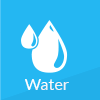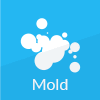
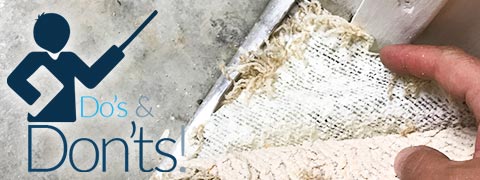



Mold Remediation Guide - FDP Mold Remediation
Mold poses a significant threat to property and the health of homeowners all over Rockville in Maryland. Indoor exposure to mold can lead to different health complications, allergies included. To make it worse, most homeowners are not aware that mold has invaded their home until the physical signs show up.
The truth is that even a small water leak is enough to cause undetected growth and spread of mold in your home.
All the same, there is always a way to fight mold before it becomes a major issue in your home, and this is what this guide is all about. Before we even go to the basics of mold remediation in Rockville, one thing you need to understand is that the process of eliminating mold can vary depending on your location.
Mold can grow in any place, as long as there is a food source, darkness, warmth, oxygen, and enough moisture. Rockville has a high humidity rate since there is plenty of water in the area. This is in consideration that there are creeks, ponds, channels, and water parks in the area that intensify the levels of humidity.
Besides, Rockville receives 42 inches of rain every year, which surpasses the US average of 38 inches of rain yearly - source. Considering such facts, it's quite clear that the conditions in Rockville, Md are conducive for serious growth of mold. This makes the remediation process in this area a little bit different, especially when it comes to thoroughness, compared to other locations in the United States.
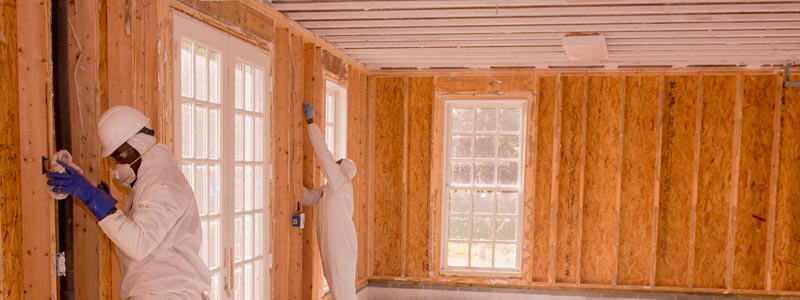
Important Mold Remediation Factors
Mold remediation can be a complicated process at times, but the good thing is that you can still eliminate mold from your home without requiring much effort.
Here is what you need to know about mold remediation process in your home:
1. Common sources of mold
Mold is typically all around us, but in minimal quantities that are hard to detect. When presented with suitable conditions, however, mold can grow quickly and cause a lot of damage in a short span.
The most common sources of mold in your home include damaged roofing, poor ventilation, and high relative humidity, basement flooding, condensation, and others. Basically, the main reason why mold may thrive in your home is dampness, brought about by too much moisture.
2. Common places where mold grows
The most common places where mold grows in Rockville homes are basements, bathrooms, and kitchens at times. This is in consideration that these areas may have a lot of moisture, creating a suitable thriving condition for mold.
To discourage mold in your home, you should consider inspecting these areas regularly for leaky plumbing, poorly sealed spaces such as windows, inadequate insulation or any other issue that may encourage dampness.
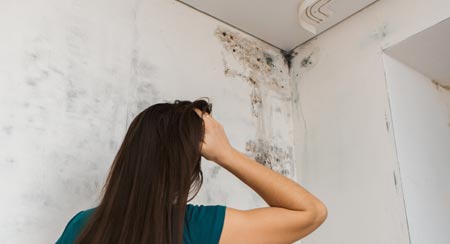
3. Testing for mold
If you can plainly see mold in your home, then there is no need at all to test for mold. However, there are cases when mold "hides" from plain sight. In such cases, it's necessary to conduct some tests. This is especially important if you can smell a musty odor in a certain room, you recently discovered mold in one area of your home, or you think that mold may be growing in your home for some reason.
Such tests can be done in different ways, such as checking for mold on a surface and testing for mold spores in the air. Checking for spores in the air is an excellent way to test for hidden mold. If you detect spores using this method, however, you will still need to find out the exact location of the mold.
The good thing with testing for mold is that there are several DIY tests that you can do without professional assistance. However, these tests are quite limited in terms of results, which is why it's a good idea to hire experts since they carry out detailed tests.
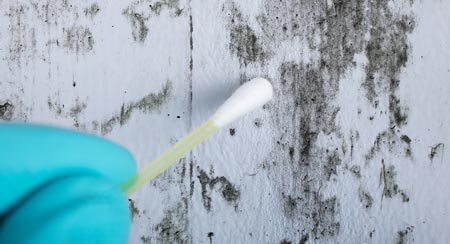
4. How mold remediation is done
Mold remediation can be quite complicated at times, but all in all, there are several steps to ensure that mold is eliminated from your home. It's important to pay detailed attention to every step to enhance the success of the remediation process.
In some cases, you should hire a professional, especially if you have a health condition that can be aggravated by exposure to mold.
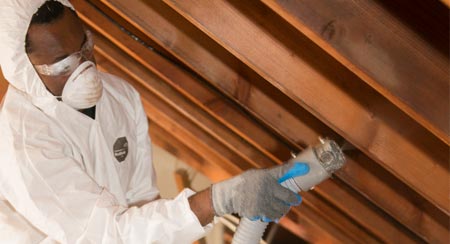
The main steps of mold remediation include:
-
Step i: Antimicrobial application
If your home has had water damage in the recent past, this is the first corrective measure you should take. Applying an antimicrobial agent to the affected surfaces discourages mold from growing as the area dries.
-
Step ii: Mold assessment
This is the procedure that involves testing for mold, to identify the source. Areas of concern in this step are basements, bathrooms, window sills, and basements.
-
Step iii: Assembling supplies
You will need several supplies such as a fungicide, heavy plastic, tape, sturdy plastic bags, gloves, face mask, scrub brush, spray bottle, rag, paint brushes, and others depending on the complexity of the situation. It's advisable that you first assess the situation to ensure that you have all the necessary supplies before beginning the cleanup process.
-
Step iv: Containment
Since mold can spread quickly using spores, containment has to be done to ensure that mold doesn't spread to other areas. To do so, you will need to seal off the working area with heavy plastic and duct tape.
You also have to remove personal items such as pianos and others from the area. If there are items that can't be removed, you should cover them using heavy sheets of plastic wrap so that they won't get contaminated.
-
Step v: Filtration
Using machines with HEPA air filters is essential, to discourage the spread of spores during the removal and cleanup process. This is a step that most DIY mold remediation processes don't cover. It's, however, not a cause for concern, since mold won't grow if there are no right conditions to encourage the growth.
-
Step vi: Wear protective gear
Your health is important, and for this reason, you will want to use protective equipment to avoid exposure to mold. Such gear should be disposed of or carefully cleaned after completion of the remediation process.
-
Step vii: Removal and cleanup
In most cases, the best way to eliminate mold from your home is the removal of affected materials. This is especially in consideration that mold mostly grows on permeable material such as drywall, wood trim, furniture, insulation, and carpets. You should, however, consider spraying such material with a bottle of water before removing them to discourage dispersal of mold into the air.
In some limited cases, cleaning can be effortless, requiring only a damp wipe. However, some cases involve quite complicated processes that may require dry ice vacuuming, wet and dry vacuuming, and others. A HEPA vacuum is preferable in cases where vacuuming is required, as it removes mold and dust as well.
When cleaning, first apply a fungicide to the affected surfaces and then use a scrub brush to remove the mold. You should aim to remove as much mold as you can, even if it means hiring a professional to handle the process. Once removed, you can then vacuum the area to get rid of the debris and mold from the cleaned surfaces.
For best results, you will need to completely dry the area afterward by ensuring that it's well ventilated and then running a dehumidifier. You can also opt to use air movers for faster drying results.
-
Step viii: Encapsulate areas that are hard to clean or remove
In some cases, mold will have affected porous surfaces that can't be removed or cleaned completely. In such cases, you can apply an encapsulating product on the surfaces using a paint brush after cleaning the areas with a fungicide.
The encapsulating product will behave like paint, but it will seal in any mold to prevent it from spreading. Most encapsulating products also have antimicrobial ingredients for killing and repelling mold.
5. What materials are used
When removing mold from your home, you will need certain materials. The good thing is that most of the materials used in mold remediation are easily accessible for DIY projects. The main materials required include:
- Personal Protective Equipment such as a Tyvek suit and others.
- Spray bottle
- Scrub brush
- Rags
- Heavy plastic bags
- Heavy sheets of plastic wrap
- Duct tape
- Vacuum cleaners with HEPA filters
- Disposable paint brushes
- Bucket
- First-aid kit
- Paper towels

6. What supplies are necessary
You will also need a variety of supplies, depending on the method of mold remediation that you've chosen. Such supplies include:
- Vinegar
- Bleach
- A fungicide such as Foster 40-80
- Mold encapsulating products such as Foster 40-50
- Tea tree oil
- Bathroom cleaners
- Paint
- Water

7. What to wear when cleaning the area
Exposure to mold can lead to various health complications, some of which can be life-threatening depending on the kind of exposure. That's why protective gear is very crucial when it comes to any mold remediation process.
Some of the protective equipment you may want to use during mold remediation include:
- An air-purifying respirator (N-95 face mask)
- Disposable Tyvek suit
- Safety goggles
- Disposable hair covers
- Disposable gloves
- Disposable shoe covers
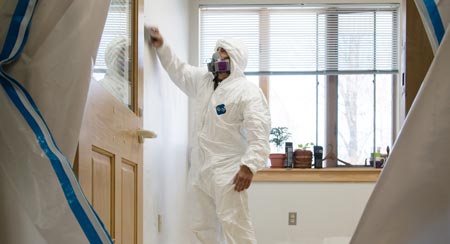
8. How do you know when remediation is over
Mold remediation is not complete until you have determined that the clean-up efforts are successful. Even though this process is usually more of a judgment call, you have to consider the following guidelines to determine that remediation is complete:
- Verifying that the moisture problem is fixed and that there are no signs of recurring water damage.
- Confirming that everyone in your home has re-occupied the space without any physical symptoms or aggravated health issues.
- Verifying that there are no more visible signs of mold or mold damage.
To be completely sure that the remediation is over, you should also consider having your home tested by an environmental testing company. After being assured that the mold is gone, all you need to do now is put necessary measures to ensure that it doesn't return.
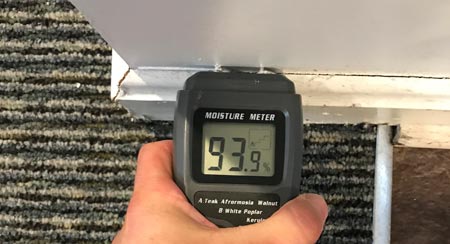
In order to be sure you are not making a mistake, please call us at 301-244-2744 at FDP Mold Remediation and get an aid from professionals.

Call










